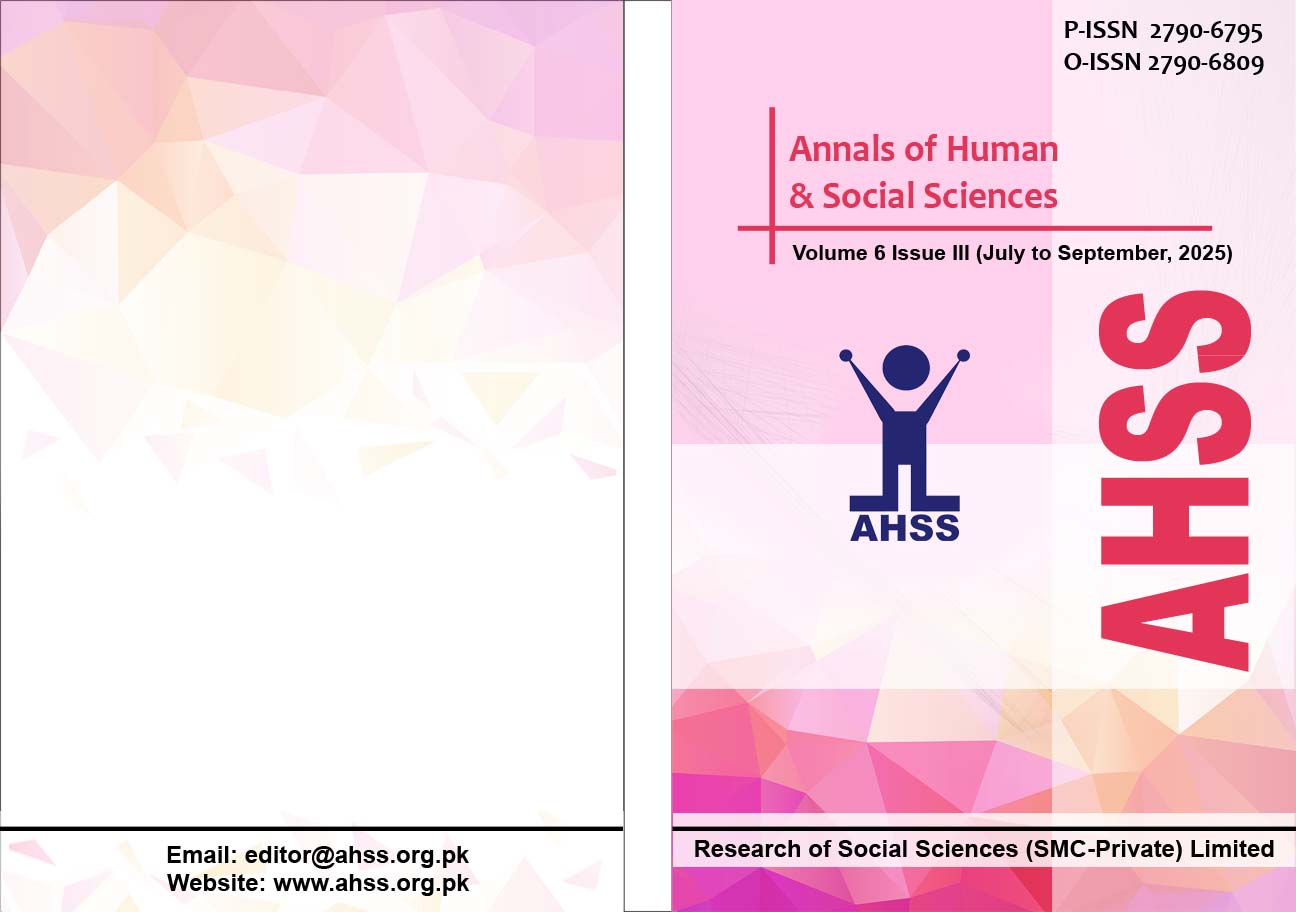Women’s Land Rights across Major Religions in Pakistan: A Comparative Analysis of Islam, Hinduism, Christianity, and Sikhism
DOI:
https://doi.org/10.35484/ahss.2025(6-III)44Keywords:
Women’s Land Rights, Islam, Hinduism, Christianity, SikhismAbstract
This research paper conducts a comprehensive examination of the core principles within Islam, Hinduism, Christianity, and Sikhism that influence women’s rights to land ownership, situated within the complex socio-cultural context of Pakistan, highlighting both shared values and notable distinctions. To accomplish this objective, the research primarily employs primary sources, concentrating on the sacred texts of these four major religions: the Quran, the Rig Veda, the Bible, and the Granth Sahib. Each of these texts offers distinct insights into the role of women concerning land ownership. These and the other primary sources, along with secondary data, are analysed through qualitative content analysis, employing a directed approach to verify, nullify, or complement the claim that “religion makes provision for women’s rights to acquire, use or inherit property.” The findings indicate that the principles of Islam, Hinduism, and Christianity confer certain rights to women regarding property ownership. In contrast, Sikhism does not have specified religious laws to regulate women’s land rights.
Downloads
Published
Details
-
Abstract Views: 173
PDF Downloads: 315
How to Cite
Issue
Section
License
Copyright (c) 2025 Annals of Human and Social Sciences

This work is licensed under a Creative Commons Attribution-NonCommercial 4.0 International License.

RESEARCH OF SOCIAL SCIENCES (SMC-PRIVATE) LIMITED(ROSS) & Annals of Human and Social Sciences (AHSS) adheres to Creative Commons Attribution-Non Commercial 4.0 International License. The authors submitting and publishing in AHSS agree to the copyright policy under creative common license 4.0 (Attribution-Non Commercial 4.0 International license). Under this license, the authors published in AHSS retain the copyright including publishing rights of their scholarly work and agree to let others remix, tweak, and build upon their work non-commercially. All other authors using the content of AHSS are required to cite author(s) and publisher in their work. Therefore, RESEARCH OF SOCIAL SCIENCES (SMC-PRIVATE) LIMITED(ROSS) & Annals of Human and Social Sciences (AHSS) follow an Open Access Policy for copyright and licensing.






